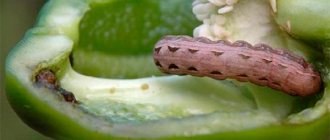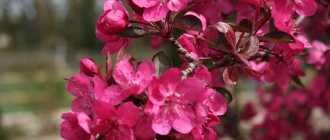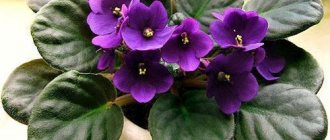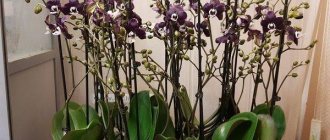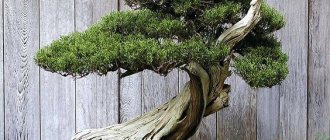Why does it sometimes not bloom?
These reasons also apply to Dendrobium Berry Oda.
- First, the grower must check the conditions of his flower. This includes temperature, air humidity, watering, and lighting.
- If all the care parameters are correct, but there are still no buds, then you should think about changing the “place of residence” for Nobile. Maybe you need to change the pot to a larger one.
- The next thing you need to pay attention to is the condition of the soil. If the flower has been in this substrate for more than three to four years, it must be urgently changed.
- Another reason for the lack of flowers may be a lack of mineral salts in the soil. Also, before the formation of buds, the orchid needs to be fertilized periodically.
To do this, they use both simply fertilizing and a growth stimulator.It is recommended to use fertilizers no more than twice a month. Otherwise, you risk harming the plant rather than improving its condition.
- Periodically inspect your Dendrobium for pests. They can also interfere with the formation of buds.
Reference! Even the smallest snails, which seem completely harmless, can be the reason for the lack of flowering.
Dendrobium Phalaenopsis
The most common types of these flowers available commercially are the numerous hybrids of Dendrobium Phalaenopsis. Their stems range from 30 to 70 centimeters in height, and the leaves spread over the upper half of the stem.
We cut off the arrow of the moth orchid. Photo used as illustration. Source: Yandex.Images
The Dendrobium pictured above is ready to be removed. Note that the frog begins its growth near the top of the stem (pseudobulb) just above the last leaf and has no leaves or bracts.
After such a plant finishes flowering, it is necessary to remove the entire peduncle, without touching the trunk with leaves. Old pseudobulbs won't bloom a second time, but don't remove them , at least not yet. Your plant needs them, because a strong and healthy flower must have at least three mature stems.
The best time to remove excess pseudobulbs - the oldest shoots whose leaves have turned yellow - is replanting. During this process, you can cut the rhizomes and remove dried stems.
Is it possible and how to force Nobile to bloom ahead of schedule?
Experienced flower growers say that it is quite possible to do this, but it is extremely undesirable. The fact is that it takes a lot of energy from a plant to produce flowers. Therefore, first the orchid itself must mature, get stronger, gain nutrients, and only then form buds . If Dendrobium Nobile blooms at the age of less than one and a half years, there is a risk that after the buds fall off, it will begin to hurt, since it has given all its strength to them.
But if the florist really wants to admire Nobile’s flowers, he needs to perform the following manipulations:
- Replace stagnant soil. If the substrate is still relatively fresh (it is no more than three years old), it just needs to be fed.
- Remove the lower leaf blades. This will stimulate flowering. IMPORTANT! Plant parts can only be removed with a sterile instrument.
Transfer
Dendrobium orchids are replanted no more than once every 2-3 years.
Causes:
- The substrate is highly salted;
- The substrate has become compacted;
- Ph increased/decreased. The norm is from 5.5 to 6.5;
- It became a little crowded in the pot due to the growth (pseudobulbs hang down along the edges of the pot).
Before transplanting the plant, do not water it for a couple of days. Then, when removing the flower from the flowerpot, the roots do not suffer as much damage. The plant is transferred to a new pot and the openings between the roots and the walls of the pot are carefully filled with new substrate.
Orchids love peace, so replanting them often is not worth it.
Before transplanting, you need to make sure that such a procedure is really necessary.
The ideal time to replace the pot is when the new shoots have grown 5 cm and they begin to grow roots.
We wrote an article about how to replant phalaenopsis orchids earlier. Read here.
How long does flowering last?
The flowers can last on the peduncle for two to three months. Sometimes these numbers may be a little more or less. It all depends on the conditions of detention.
I would like to pay special attention to the flowering of Dendroibum White. This variety usually does not grow below half a meter. The stems grow from one to three. When the plant blooms, the stems are completely covered with white flowers, the number of which reaches up to 60 pieces. How long does the flowering process of Dendrobium White take? Also for several months (maximum six months).
Dendrobium White is famous among gardeners for its unpretentiousness. Such an orchid will easily survive the fact that the grower forgot to water it. It does not have to withstand a daily temperature difference of exactly five degrees, it can be less. In the summer, Dendrobium White will grow and develop beautifully on the balcony.
Step-by-step instructions: what to do if the buds do not appear?
To achieve flowering, the gardener only needs to perform a few simple manipulations:
- Change the flowerpot and substrate.
But it is important to remember that this particular type of orchid is very difficult to transplant. Therefore, after this process it is necessary to provide the plant with the most comfortable conditions. Attention! The pot should never be much larger. You need to choose a container whose volume will be larger than the volume of the rhizomes by just a couple of centimeters. - Feed. This process will not cause difficulties. It is enough just to choose the right complex of fertilizers, which will be intended specifically for the Orchid family. An important condition for feeding is adherence to the regime - you cannot overdo it with the addition of nutrients.
- Adjust the growing conditions to the most optimal for Dendrobium Nobile.
What to do after the buds fall off?
After the last buds fall off, the plant needs to be provided with a period of rest and rest. To do this you need:
- Raise the room temperature.
- Increase air humidity levels.
- Fertilize the plant twice a month.
Let us remind you that during flowering there is no need to feed the plant .
How to take care next?
- Priming. A substrate that is intended for all other orchids is suitable. You can prepare the soil mixture yourself. To do this, you need to take bark (pine or spruce), sphagnum moss, peat and river sand in equal proportions.
Reference! Self-prepared soil should be poured with boiling water and allowed to brew for a quarter of an hour.Do not forget about the drainage layer, the height of which should be approximately 1.5-2 centimeters.
Lighting. Under natural conditions, Dendrobium Nobile lives in diffused light. Therefore, it is better to place the flower pot on the eastern or western windowsills.
- Watering. It is necessary to moisten the soil only after it has completely dried.
And in the winter season, the plant generally needs to be given a drought. During the warm period, watering twice a month will be sufficient. Watering can be done either by immersion or by shower. Both methods are correct. Water for irrigation should not be too cold. When watering with a shower, you need to ensure that drops of water do not fall on the pseudobulbs and leaf rosette. - Air temperature. The air should be well heated if there is a lot of light in the room.
If the lighting is weak, then the air temperature needs to be reduced. The optimal temperature range ranges from 18-22 degrees Celsius. Important! During particularly hot hours, you need to spray the plant more often so that the roots and leaves do not dry out.
How to care for an orchid depending on its condition
A huge number of varieties of this species differ in their preferences regarding the environment, since they do not live in the same places in the wild. Hybrids are more adapted to the apartment microclimate, but they also require an individual approach.
Let's look at the key points that are vital for most orchids of this type:
- absence of drafts, stagnation of water, shading;
- protection from direct sun rays;
- additional lighting in winter to extend daylight hours by 4 hours;
- ensuring air humidity of at least 60%;
- during the period of active growth, application of complex liquid fertilizers with nitrogen;
- selection of soil mixture.
When you decide to place an exotic beauty in your home, try to follow these simple rules for keeping it so that there are no problems with the health of the orchid, and it regularly delights you with bright buds.
There are several factors that have a key influence on the appearance of flower ovaries.
Light
This is a stimulator for the formation of buds in any orchids, and dendrobiums are no exception. This genus is light-loving and prefers placement on eastern, southwestern, northeastern and southeastern window sills.
With a lack of lighting, the buds form poorly or do not appear at all. Therefore, in regions where the cold season is accompanied by predominantly cloudy skies, it is very important to arrange additional lighting.
In order for the plant to bloom, it is necessary to increase the light intensity and duration.
Advice: when choosing a phytolamp, you will encounter a lot of nuances. Devices that produce more blue and red light are suitable for orchids. If the window is north-facing, a device with a power of 54 W is suitable, and for western and eastern window sills - 30-39 W.
Microclimate
The next important factor is the temperature difference. This especially applies to the Nobile orchid, which needs care after flowering. It can remain in sleep mode for a long time if you do not cause a temperature shock.
The correction that causes the formation of flower buds is listed in the table. Without it, Nobile actively hatches on adult pseudobulbs. Thus, you can help the plant a little, but if this does not work, you should look for a health problem.
| Cycle phase | Daytime t °С | Night temperature °С |
| Bloom | +21…+28 | +17…+20 |
| Falling buds | +18…+20 | +12…+15 |
Watering
The adjustment depends on the phase in which the plant is:
- Has faded - reducing the frequency of soil moisture. At this time, immersing the pot with the plant in water is completely avoided, and the procedure is carried out using a watering can.
- New bulbs begin to “inflate”—drying. Keep without watering for a week after the substrate dries. The procedure is aimed at stimulating the formation of flower buds.
- After the formation of a stop list at the top of the column, increase watering. But the plant should not be over-watered; it must be kept in relatively moist soil, which should not dry out between procedures.
- The growth of flower stalks and flowering itself require regular and abundant irrigation. Even more than in other phases. At this time, it is permissible to immerse the pot in settled water at room temperature. Reduce intensity only in low light and cool indoor conditions. Under such circumstances, the plant will not have time to absorb everything and will begin to hurt.
It follows that when Dendrobium refuses to bloom, it can be “scared” by a dry period, but first you need to check the condition of the soil. It's probably just depleted of nutrients due to long-term use.
Top dressing
Last but not least, the most important factor for orchid flowering is the addition of sufficient, but not excessive, fertilizer. This process is also organized depending on the period of the Dendrobium life cycle.
| Phase | Need | Which fits better? |
| Growth of young animals | High. Need nitrogen. | Agrecol |
| Thickening of the bulbs | Average, less frequent. A weak solution of a balanced preparation. | "Fasco" |
| Peduncle formation | High. Predominance of phosphorus and potassium. | Pokon |
Tip: the table shows the names of the most popular products that are best suited for Dendrobium. But you need to choose a fertilizer marked “For orchids.”


